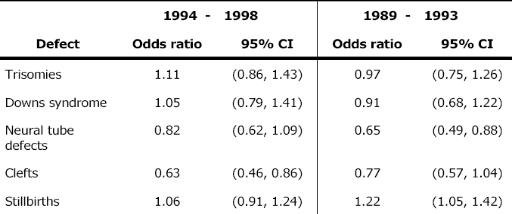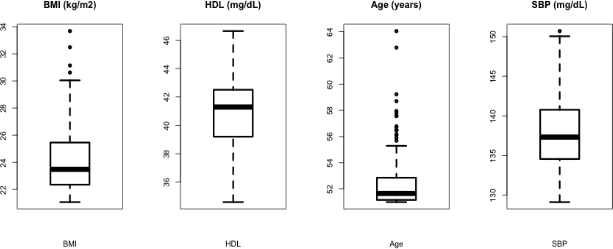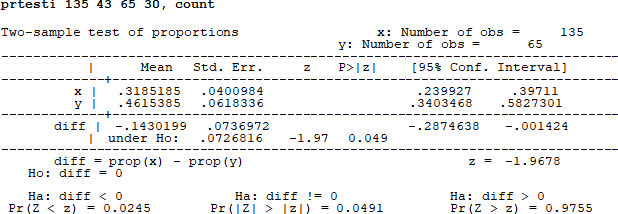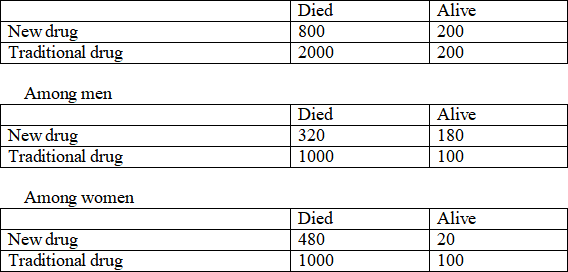GLHLTH 705K Final
Hello, dear friend, you can consult us at any time if you have any questions, add WeChat: daixieit
GLHLTH 705K
Final
Show all your work. Keep two decimal places.
1. [7 points] Write True or False on the right side of each question below.
a) About 68% of the data from a standard normal distribution is between –1 and 1.
b) The standard deviation for a sample mean of size 500 is 10 times smaller than the standard deviation for a sample mean of size 50 from the same population.
c) A 95% confidence interval (CI) based on a sample of size 50 is just as likely to contain the population parameter as a 95% CI based on a sample of size 100.
d) Statistical significance can arise because the null hypothesis is false or just by chance.
e) Central Limit Theorem justifies using normal-distribution theory to do inference on the means of samples drawn from non-normal populations.
f) You can calculate the disease incidence but not the prevalence in a cohort study.
(Questions g-j) Using a 5% significance level, the following table shows the odds of defect in fluoridated areas divided by odds of defect in non-fluoridated areas in two time periods: 1994-1998 and 1989-1993.

g) Non-fluoridated areas had a significantly higher risk of stillbirths during 1989-93.
h) Fluoridated areas had a significantly less risk of clefts during 1994-98.
i) There were significantly more neural tube defects in 1994-98 compared to 1989-93.
j) Fluoridation may be protective against clefts.
2. [1 point] Which of the following statistics is robust to outliers? Select all that apply.
a) Mean
b) Median
c) Interquartile range
d) Variance
e) Range
3. [1 point] The mean and standard deviation (SD) of a class exam was 500 and 100 points, respectively. If each student’s score was increased 25 points, what is the mean and SD?
a) 500, 100
b) 500, 125
c) 525, 100
d) 525, 125
4. [1 point] A significance test comparing two population proportions gives a P value of 0.025, which of the following is the proper conclusion?
a) Probability that H0 is true is 2.5%
b) Difference in population proportions is 2.5%
c) Probability that H1 is true is 2.5%
d) Probability that the test is wrong is 2.5%
e) None of the above
5. [1 point] In a study that enrolled 1000 women aged 45-64 years of age for 0.5 years, 10 developed breast cancer in 6 months. What was the incidence rate for breast cancer? Select all that apply.
a) 5 events per 1,000 person-years
b) 10 events per 500 person-years
c) 50 events per 100 person-years
d) 0.005 events per 1 person-year
6. [6 points] The table below shows the summary information for four variables of 200 participants.

Abbreviations: IQR, interquartile range; BMI, body mass index; HDL-C, high-density lipoprotein cholesterol; SBP, systolic blood pressure.
The figure below shows the box-plots of four variables for 200 participants.

a) What statistics are shown in A, B, C, and D? [mean, median, SD, or variance]
b) Which numbers match E, F, G and H in Table 1 (approximately)? (Note: no calculations needed).
c) What test would you use for examining whether those with low HDL (i.e., HDL< 40) have higher BMI than those with high HDL? What assumptions are required for using the test? State the null and alternative hypotheses.
d) The following Stata output below compares the proportion with low HDL between 65 overweight and 135 non-overweight participants. What does the 95% confidence interval imply about the difference in proportion with low HDL between overweight and non-overweight subjects? Would you reject H0 at the 5% significance level based on the confidence interval? Based on the Z-test? Explain whether the two are compatible or not.

e)
7. [2 points] A group of researchers were interested in studying the association between childhood abuse and bipolar disorder among young adults aged 18-45 years. They identified 300 bipolar disorder patients through mental health clinics in the greater Los Angeles metropolitan area. In addition, for each patient, they identified two participants who lived in the same community but did not have bipolar disorder. Then, the researchers collected information about all participants’ socio-demographics and childhood abuse experience. They found that 120 and 80 persons had childhood abuse among those with and without bipolar disorder, respectively.
a) Quantify the relationship between childhood abuse and bipolar disorder using an appropriate measure of association of your choice. Interpret the results.
b) Provide a brief, non-technical conclusion about this study. The conclusion should be understandable to a high school student.
8. [2 points] A total of 2,000 Hispanic men aged ≥45 years participated in a survey research aiming to identify the association between obesity (obese vs. non-obese; self-reported) and heart failure (yes vs. no; self-reported physician’s diagnosis). Among 900 non-obese persons, 220 reported having heart failure, while 540 reported having heart failure among 1100 obese persons.
a) What is the estimate of prevalence of heart failure among the entire population, those with obesity, and those without, respectively?
b) Quantify the relationship between obesity and heart failure using an appropriate measure of association of your choice. Interpret the results.
c) Provide a brief, non-technical conclusion about this study. The conclusion should be understandable to a high school student.
9. [2 points] A total of 3,000 African American adults aged ≥65 years participated in a longitudinal study of functional limitation and dementia. Participants were asked to report whether they had functional limitation (yes or on) at baseline and their dementia status (yes or no) were followed for up to 10 years. Among 1,800 participants with no functional limitation, 85 had dementia, while 205 had dementia among 1,200 persons with functional limitation.
a) Quantify the occurrence of dementia among persons with and without functional limitation, respectively, using at least two measures of disease occurrence of your choice.
b) Quantify the relationship between functional limitation and dementia using at least two measures of association of your choice. Interpret the results.
c) Provide a brief, non-technical conclusion about this study. The conclusion should be understandable to a high school student.
10. [3 points] A new drug to reduce 5-year mortality among pancreatic cancer patients was tested in a randomized control trial. The results of this trial are provided below.

a) Calculate the crude measure of the association (one on additive scale and another on multiplicative scale) between pancreatic cancer treatment and 5-year mortality. Interpret the results.
b) Calculate the sex-specific association (one on additive scale and another on multiplicative scale) between pancreatic cancer treatment and 5-year mortality. Interpret the results.
c) How would you report and explain these results to a high school student?
2024-01-08